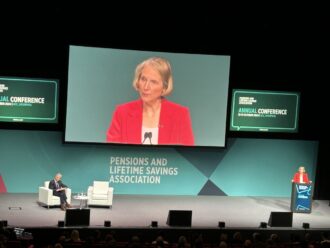Hedge funds’ failure to revisit depositary arrangements since the introduction of AIFMD has led to larger funds paying unnecessarily high fees, a survey has revealed.
Hedge funds have received negative publicity in recent years over various issues, ranging from inconsistent performance to pricing concerns. But a survey by UK Depositary INDOS Financial reveals that there is another factor which investors with exposure to hedge funds should consider: cost inefficiencies with regard to their depositaries.
The study highlights that many hedge funds tend to have a fixed fee measured as a percentage of the assets, rather than a fee rate that scales down as assets grow, an arrangement which is cost inefficient for managers of larger funds, according to INDOS.
INDOS chief executive Bill Prew highlights that with a fixed depositary rate a $250m (£179m) fund would be paying $50,000 (£35,820) a year in depositary fees, while a $1bn (£700m) fund would pay $200,000 (£143,280) over the same period.
“It is rarely the case that a $1bn fund is four times the complexity, or work involved to service, than a $250m fund and a more tailored approach to pricing is required,” he stresses.
INDOS sees a key reason for hedge funds’ failure to adapt is the general increase of regulatory burdens since the global financial crisis, with many funds struggling to adjust to Mifid II and AIFMD simultaneously.
Another factor might have been the positive financial performance of hedge funds throughout 2017, which attracted some $94.7bn (£67.8bn) of inflows in 2017, according to Eurekahedge. This positive reversal may have resulted in funds paying less attention to cost pressures, INDOS says.
According to recent research by data provider Prequin, 474, or 51%, of public pensions funds globally were invested in hedge funds in 2017. Of these, 35% reduced their exposure to hedge funds, while 28% increased their allocation to the sector.
UK local authority pension funds have tended to increase their exposure to hedge funds, as a recent Reuters survey revealed.
The 10 largest schemes in England and Wales have increased their exposure to hedge funds by £2.2bn in the 12 months to the end of March 2017. This amounts to 2.3% of their overall assets, compared to 2.1% in 2016.



